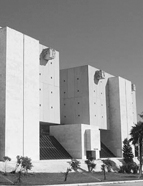

................................
The incorporation policies, shaped by historiographical interests, created a situation where the National Archive became inadequate to accommodate all the documents under the supervision of the General Inspection of Public Libraries and Archives. The limited space at the Torre do Tombo called for the creation of annexes, which essentially served as repositories for records that could not be housed in the National Archive.
In 1912, Júlio Dantas was appointed Inspector of Libraries and Archives. He quickly recognised that centralising collections in the National Archive was impractical and advocated for decentralisation and the creation of public archives to fulfil the incorporation policy mandated by law. Consequently, in 1915, the Archive of Settled Cases was established in the former Convent of Estrela to house judicial records. In 1916, the Archive of Parish Records was created in the former São Vicente de Fora Palace, and in 1917, the Archive of Congregations was founded in Quelhas to store records from religious congregations dissolved after the establishment of the Republic. The consolidation of all this documentation was only achieved after the National Archive’s relocation to its current building, inaugurated in 1990. The National Library also collected historical records, such as those of the Overseas Council and the Directorate-General of the Navy, which had long been stored in facilities belonging to the Ministry of the Navy and Overseas Affairs.
Another consequence of the National Archive’s limitations, along with the realisation that mass incorporations could no longer be concentrated there, was the creation of various public archives: district archives (established from 1916 onward s ), ministerial historical archives, and the Colonial Historical Archive. As a result, documentation from the central administration, which by law was meant to be safeguarded by the Torre do Tombo, became dispersed among different custodial entities. This dispersion had highly negative effects, particularly on the older collections scattered across various ministerial dependencies, which lost their systemic unity due to the absence of a coherent policy that respected their integrity. The processing and dissemination of the incorporated collections were also significantly delayed. In 1922, Mesquita de Figueiredo sought to address the lack of tools for accessing information, particularly concerning the archives incorporated after Liberalism, by compiling a Roteiro prático [Practical Guide] (A. M. Figueiredo, 1922) using a topographical criterion. However, this guide soon became obsolete as much of the documentation was relocated shortly thereafter. In 1935, João da Silva Marques also published the well-known Index indicum , the first volume of broader work intended to serve as a general guide to the archive, referencing the existing access tools of the time, al though it did not cover the entirety of the collection (J. M. S. Marques, Arquivo Nacional… , 1935).
This work is financed by national funds through FCT - Foundation for Science and Technology, I.P, in the scope of the projects UIDB/04311/2020 and UIDP/04311/2020.
